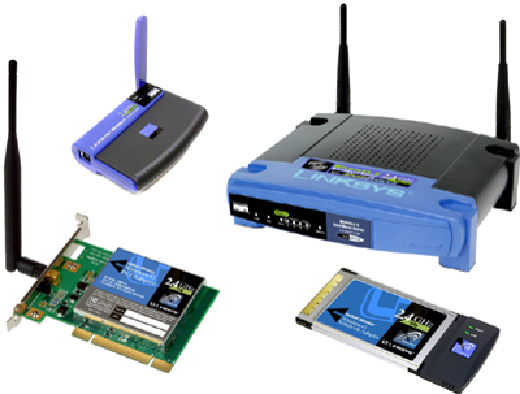Hardware Reference
In-Depth Information
(Photos courtesy of Cisco
.
)
Although most recent laptop computers include 802.11b/g/n wireless Ethernet or dual-
mode 802.11a/b/g/n support through an integrated Mini PCI or PCIe Mini card, you can
addsupport forother 802.11wireless networks byeither upgrading the internal card orby
attaching an additional card via a CardBus slot, ExpressCard slot, or USB port.
When a Wi-Fi-enabled system receives multiple Wi-Fi signals, client systems lock onto
the strongest signal from access points and automatically roam (switch) to another access
pointwhenthesignalstrengthisstrongerandtheerrorlevelislowerthanthecurrentcon-
nection. Of course, if you want the system to lock onto a specific signal, that can be done
via the OS or manufacturer-provided software.
Mostpeopleuseawirelessrouterasthebasisofawirelessnetwork.Awirelessrouternor-
mally contains a router (which is connected to a cable/DSL modem), switch, and access
point. When looking for a wireless router, I recommend only those that include Gigabit
Ethernet switches as well as a Gigabit Ethernet WAN port for connecting the router to a
cable/DSL modem.
Additional hardware you might need to add to your network includes the following:
•
Wireless bridges
—These devices enable you to connect a wired Ethernet device, in-
cluding noncomputer items such as video games or set-top boxes, to a wireless net-
work. These are sometimes called wireless gaming adapters.

